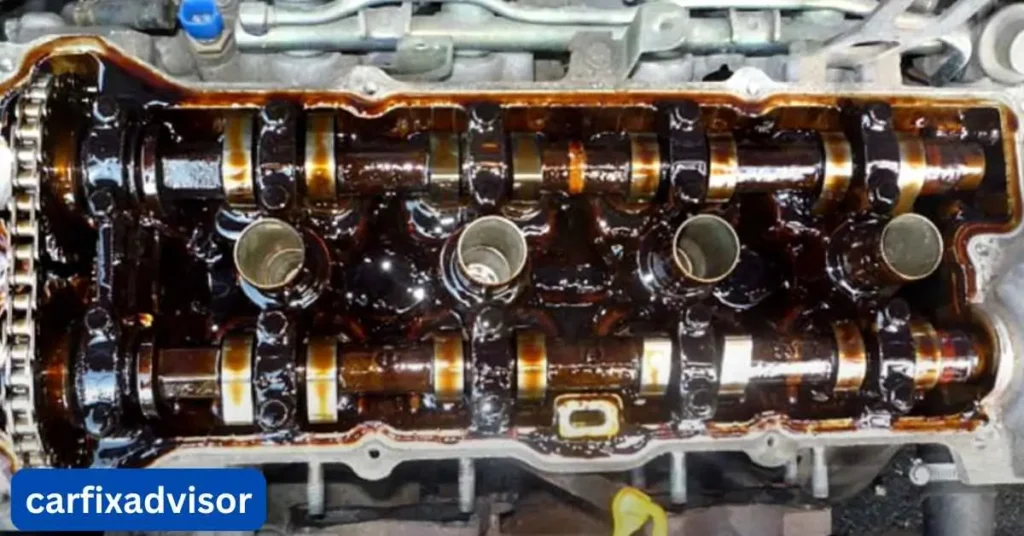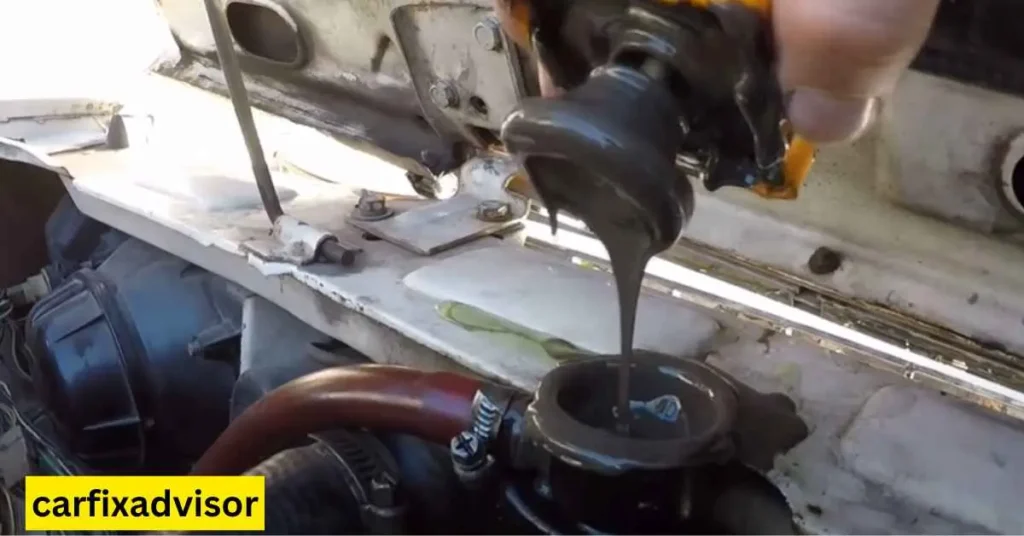If you’ve noticed coolant in the exhaust but not in the oil, you’re likely dealing with a potential issue in your vehicle’s engine or cooling system. This problem can be concerning, and understanding what causes it and how to address it is crucial for maintaining the longevity of your car.
In this article, we’ll explore why coolant might appear in the exhaust without being present in the oil, the possible causes behind it, and how you can handle the situation effectively. Whether you are a car enthusiast, a DIY mechanic, or simply someone trying to understand your vehicle’s needs better, this guide will help you navigate this common issue.
What is Coolant and How Does it Work in Your Vehicle?
Coolant, also known as antifreeze, plays a critical role in your vehicle’s engine by regulating its temperature. It circulates through the engine and absorbs heat to prevent the engine from overheating. The coolant is then passed to the radiator, where it is cooled before being recirculated.
Functions of Coolant:
Temperature Regulation: Keeps the engine running at an optimal temperature by preventing overheating or freezing.
Lubrication: Helps lubricate various engine components, reducing friction and wear.
Corrosion Prevention: Contains additives that protect engine parts from rust and corrosion.
Coolant flows through the engine and helps keep it from reaching dangerous temperatures. It should always be at the proper level and in good condition to ensure the engine operates smoothly.
Why Coolant May Appear in the Exhaust but Not in the Oil
Coolant should ideally stay within the engine’s cooling system. However, in certain circumstances, it may find its way into the exhaust system without entering the oil. This occurrence can indicate an underlying issue in the engine, and while it’s not an immediate cause for panic, it should not be ignored.
1. Leaking or Cracked Cylinder Head
What Happens: A cracked or leaking cylinder head is one of the most common causes of coolant entering the exhaust system. The cylinder head houses the combustion chambers, where fuel and air mix and are ignited. If the cylinder head is damaged, coolant can leak into these chambers and be burned off, leading to visible white smoke in the exhaust.
Why It’s in the Exhaust and Not the Oil: Since the combustion chamber is where the engine burns fuel and coolant, any coolant entering this area will vaporize and exit through the exhaust system as white smoke. It won’t mix with the oil unless there’s an additional issue, such as a cracked engine block or a blown head gasket.
2. Blown Head Gasket
What Happens: A blown head gasket occurs when the seal between the cylinder head and the engine block fails. This can allow coolant to enter the combustion chambers, causing it to evaporate and exit through the exhaust. The engine’s oil may remain unaffected if the gasket is not leaking coolant into the oil passages.
Why It’s in the Exhaust and Not the Oil: The head gasket failure could be limited to the coolant passages between the engine block and cylinder head, which means the oil is not directly affected. However, the coolant can still be burnt off during the combustion process and exit through the exhaust system as white smoke.
3. Cracked Engine Block
What Happens: In rare cases, the engine block itself can develop cracks, allowing coolant to leak into the combustion chamber. If this happens, coolant can burn off during the combustion cycle and exit through the exhaust, but it typically requires severe damage to the engine block to allow coolant into the exhaust without mixing with the oil.
Why It’s in the Exhaust and Not the Oil: Coolant may enter the combustion chamber and exit through the exhaust without affecting the oil directly. However, depending on the severity of the crack, it could lead to coolant mixing with the oil later on, which would require immediate attention.
4. Damaged EGR Cooler
What Happens: The Exhaust Gas Recirculation (EGR) cooler helps to reduce harmful emissions by cooling exhaust gases before they are reintroduced into the engine’s intake. If the EGR cooler fails, it can allow coolant to leak into the exhaust system, producing white smoke.
Why It’s in the Exhaust and Not the Oil: The EGR cooler is designed to transfer coolant into the exhaust stream. If it leaks, coolant will escape into the exhaust, but the oil system remains unaffected.

Signs That Coolant Is Entering the Exhaust
If you’re wondering whether coolant is entering the exhaust system but not the oil, here are a few signs to watch for:
1. White Smoke from the Exhaust
What It Means: One of the most obvious signs of coolant entering the exhaust is the presence of white smoke coming from the tailpipe. This smoke is produced when coolant enters the combustion chamber and is burned off during the ignition process.
2. Sweet Smell in Exhaust
What It Means: Coolant has a distinct, sweet smell when it’s burned. If you notice this odor coming from your exhaust, it’s a strong indicator that coolant is being burned off in the combustion chamber.
3. Decreased Engine Performance
What It Means: If the coolant is entering the exhaust, it could indicate a loss of compression in the engine, which may affect its overall performance. You might notice rough idling, loss of power, or difficulty starting the engine.
4. Loss of Coolant
What It Means: If you’re consistently losing coolant without seeing any visible leaks, it’s possible that the coolant is being burned off in the combustion chamber and expelled through the exhaust. Keep an eye on your coolant levels to monitor any unexpected drops.
How to Handle Coolant in Exhaust but Not in Oil
If you notice coolant in the exhaust but not in the oil, it’s essential to address the issue as soon as possible to prevent further damage to your engine. Here’s what you can do:
1. Do Not Continue Driving
Why: Continuing to drive with coolant entering the exhaust can cause further engine damage, especially if the problem is due to a cracked cylinder head, a blown head gasket, or a damaged engine block.
Solution: Stop driving your vehicle immediately and have it towed to a mechanic. Continuing to drive could worsen the issue, leading to more costly repairs.
2. Get a Diagnostic Test
Why: A professional mechanic can perform tests to determine whether the issue is a cracked cylinder head, a blown head gasket, or something else. These tests often include a compression test, cylinder leak-down test, or coolant pressure test.
Solution: Schedule a diagnostic test with a mechanic to pinpoint the exact cause of the issue.
3. Consider the Cost of Repair
Why: Depending on the cause, the repair costs can vary significantly. For example, a blown head gasket may be less expensive to repair than a cracked engine block. It’s important to weigh the costs before proceeding with any repair work.
Solution: Once the cause is diagnosed, ask the mechanic to provide an estimate for the repair and consider whether the cost is worth repairing or if replacing the engine might be a more economical solution.
Preventing Coolant Issues in the Exhaust System
While some degree of coolant leakage into the exhaust system can be caused by normal wear and tear, taking proactive measures can help prevent this issue from occurring. Regular maintenance and careful driving habits can extend the life of your engine and prevent costly repairs down the road.
1. Regularly Inspect Your Head Gasket
Why: The head gasket plays a critical role in sealing the engine’s cylinders. If it fails, coolant can leak into the combustion chamber. By inspecting the head gasket regularly and replacing it at the first sign of wear, you can prevent much more severe damage to the engine.
Tip: If your car has high mileage, it might be worthwhile to inspect the head gasket during regular maintenance. Look out for signs of coolant loss or irregular engine performance.
2. Monitor Engine Temperature
Why: Excessive heat is one of the leading causes of head gasket failure. Regularly monitoring your engine’s temperature can help you detect overheating before it leads to damage.
Tip: If you notice your engine temperature rising higher than normal, pull over and allow the engine to cool down. Addressing overheating issues promptly can prevent coolant from entering the exhaust.
3. Flush and Replace Coolant
Why: Old coolant can become acidic and cause corrosion in various components of your cooling system. Regularly flushing and replacing the coolant ensures the system stays clean and prevents rust and damage.
Tip: Change your coolant at the intervals recommended in your vehicle’s manual, typically every 2 years or 30,000 miles, whichever comes first. Doing so will help maintain optimal cooling system performance.
4. Use Quality Coolant
Why: Not all coolants are the same. Using the wrong type or a low-quality coolant can increase the risk of damage to your engine, including potential leaks into the exhaust system.
Tip: Always use the type of coolant recommended by your vehicle’s manufacturer. This ensures that it is chemically compatible with your engine and will perform optimally.
5. Address Small Leaks Early
Why: Even a small coolant leak can eventually lead to larger problems, such as coolant entering the exhaust system. Identifying leaks early on can save you from significant repairs down the road.
Tip: Check for coolant leaks around the radiator, hoses, and seals during routine maintenance. Fixing small leaks as soon as they are detected helps prevent more severe issues.

Conclusion
Finding coolant in the exhaust but not in the oil can indicate serious issues such as a cracked cylinder head, a blown head gasket, or a damaged engine block. It’s essential to understand the root cause of the problem, as continued driving with this issue can lead to severe engine damage.
By addressing the issue promptly and avoiding driving with an overheated engine, you can prevent further damage to your vehicle. Regular maintenance, including monitoring engine temperature, checking for leaks, and using quality coolant, will also help keep your cooling system functioning properly and reduce the risk of coolant leaking into the exhaust system.
If you notice any of the symptoms associated with coolant in the exhaust, it’s vital to stop driving and get your vehicle inspected as soon as possible. A professional mechanic will be able to diagnose the problem and recommend the most appropriate solution, saving you both time and money in the long run.

